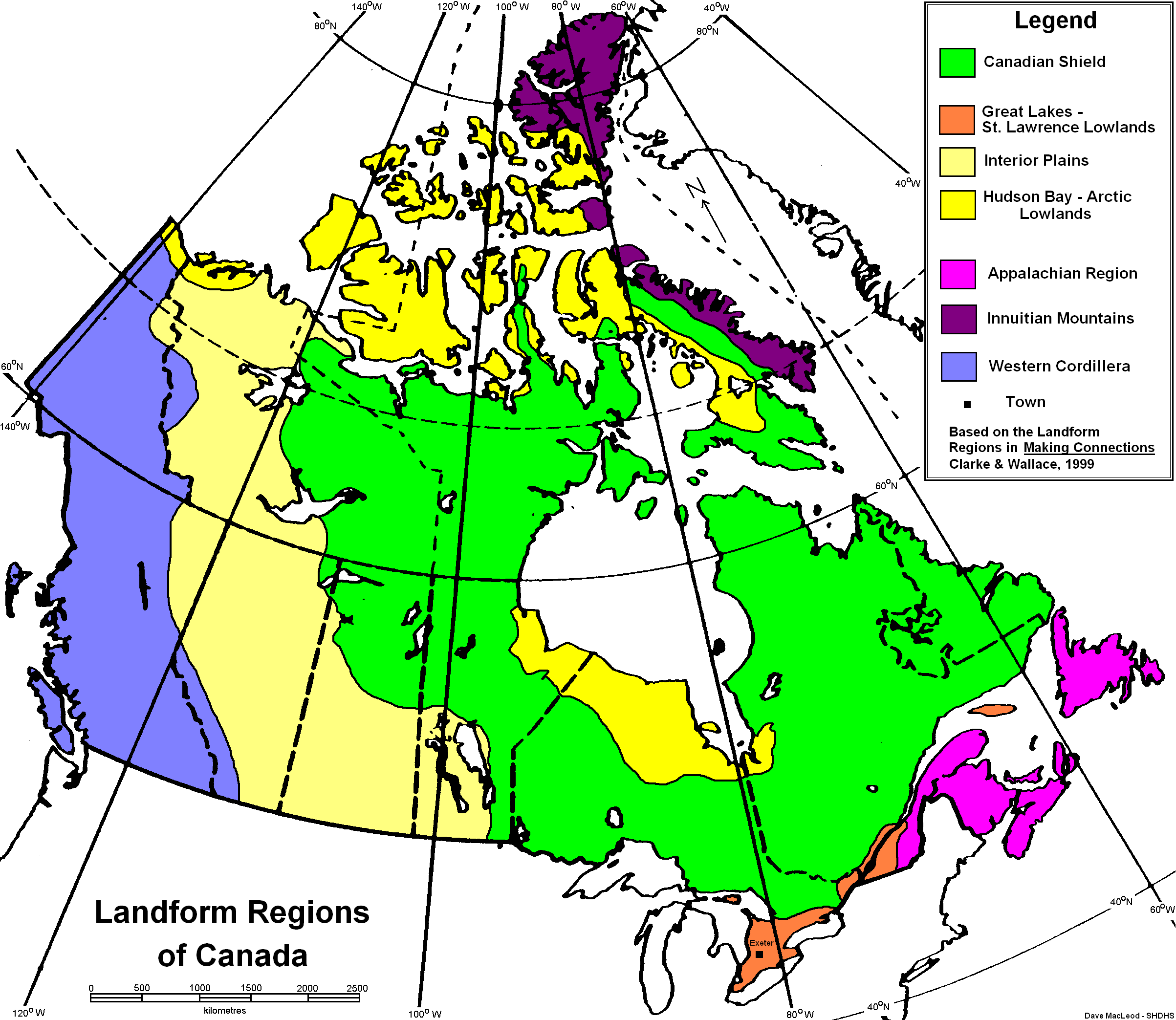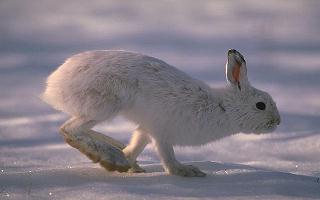Geography

The Hudson Bay Lowlands are the bright yellow that is located just under the Hudson Bay.
The entire Hudson Bay Lowlands gradually slopes toward the Hudson Bay at a gradient of less than one metre per kilometre. Around 85% of the region is wetlands, and there is seemingly more water than earth. The water can be found in the form of lakes, rivers, bogs and fens. Water in the form of permafrost underlies most of the region, and in the summer it thaws and invites many biting bugs. The Big semi-circle of the Hudson Bay was suggested to be caused by a massive meteor strike. The bedrock terrain is completely masked by a mantle of glacial and marine sediments from the advance and retreat of ice during the last glaciation. There are parallel gravel beach ridges that were caused by storm waves thrown up during the last 5000-6000 years, as the sea level fell in response to rapid uplift of the Earth Crust.

Hudson bay Lowlands landscape
Climate
The daily temperature in July ranges from 12 degrees Celsius to 16 degrees Celsius, and in January, it is from -25 degrees Celsius to -23 degrees Celsius. The average annual precipitation is 500mm to 700mm per year, and that number is lower in the northern area. There are web-like or polygon shapes in the soil, and the soil also has very poor drainage which results in the wetlands and abundance of insects in the summer. Climate change will effect the region by making the winters shorter and have shorter periods of ice cover. The harmer temperatures mean more evaporation and lower water levels.

Churchill climate graph

Mossonee climate graph

Thompson climate graph
Flora and Fauna
The Vegetation of the Hudson Bay Lowlands follows two basic patterns; north to south ans altitude. North to south it starts really bare and treeless in the tundra, but moving south into the Taiga more, trees appear. The altitude pattern results in belts of trees, because the trees can only grow in the northern region due to the poor drainage of the soil . Some species of trees that can be found are black spruce, white spruce, tamarack, balsam poplar and dwarf birch.
The highest diversity of animals can be found in the summer when migrating birds come to breed and the insects come out. It is estimated that a single hectare can produce up to ten billion black flies. The birds have adapted to their environment by leaving for the cold winter, and coming back when the climate is more suitable. Some mammals that live there are caribou, deer, moose, bears, snowshoe hares, beavers, red foxes, minks, seals and belugas.

Snowshoe hare
Human Geography
Only 0.04% of Canada lives in this region with a population of 10 000 people in all of the Hudson Bay Lowlands. There are approximately 2.7 people per 100 square kilometers. People use the land for tourism, fishing, hunting and trapping. The major cities are Churchill and Moosonee.
Economy
Similar to the Canadian Shield, the Hudson Bay Lowlands' economy is heavily based off of mining. Being around the Hudson Bay, this region was prime for fur trapping and it became the prime economic activity. Forestry isn't important here since there aren't any rich forests to harvest, and the soil does not drain well so agriculture is not an industry here either, The region has many mines and smelters, ranging from nickel, copper and gold mines to an aluminium smelter.
Environmental Concern
A major concern for environmentalists is the rapid increase in temperature of the Hudson Bay since the 1990's. In the past, icebergs in the bay would keep the bay cold, but it reached its limit and the temperature has been rising for the past twenty years. This is a result from the rising global temperature that can be felt throughout the world. A way to stop global warming is to reduce carbon emissions and pollution being pumped into the air, however, people have been talking about doing this for quite sometime and nothing has changed. Perhaps looking at another method would work easy due to this one not taking effect.
global warming image
No comments:
Post a Comment